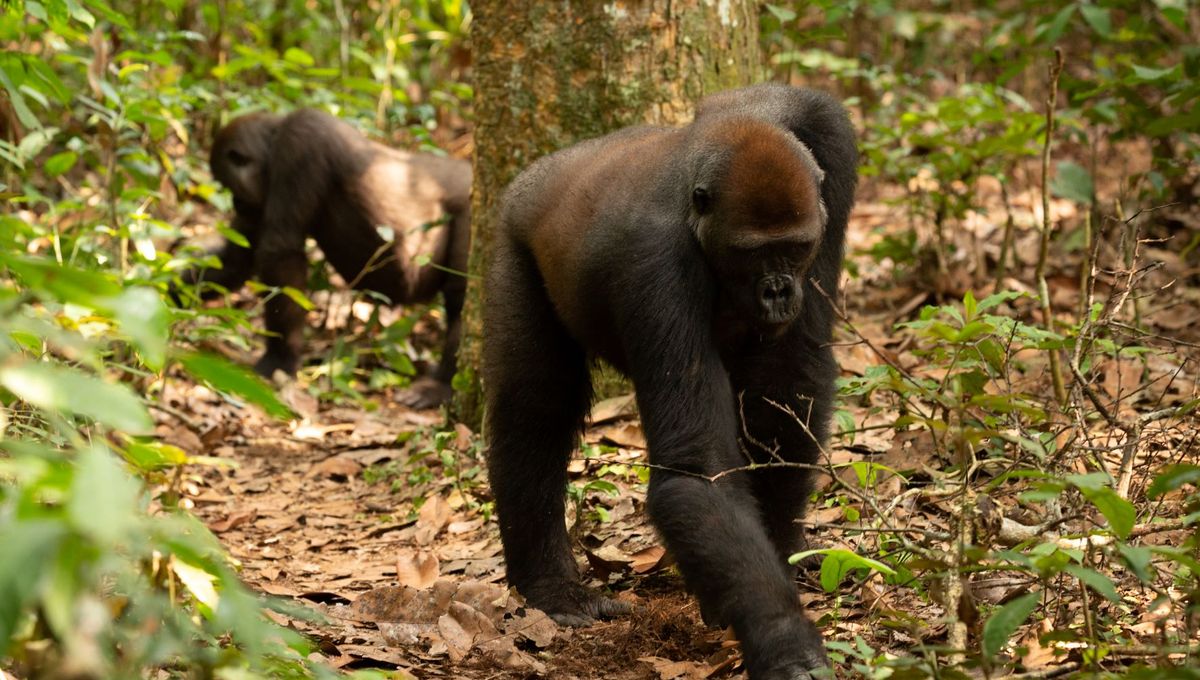
Well, la-di-da! Who knew great apes had such fine tastes? Gorillas in parts of the Congo are occasionally seen scratching at the soil, seemingly in search of bugs and grubs. However, new research has shown that they’re actually scouting for a much more specific food source: truffles.
These findings were based on observations of western lowland gorillas in two localities in the Republic of Congo’s Nouabalé-Ndoki National Park: the Goualougo Triangle and the Djéké Triangle.
Researchers made daily observations of four gorilla groups and watched as they scratched the soil of the forest floor to extract deer truffle species, identified as Elaphomyces labyrinthinus. These soil-borne lumps are the fruiting body of an ascomycete fungus and, just like the ones you get on fancy pasta dishes, are a good source of nutrition.
The discovery also adds gorillas to the small group of animals known to seek out truffles. While truffles eaten by humans are typically unearthed with the help of trained pigs or dogs, some wild animals, such as birds and small mammals like voles and gophers, are known to forage for them. Other great ape species, like bonobos, have also been seen munching on foraged truffles in the rainforests of the Democratic Republic of Congo.
The recent observations of gorillas joining this truffle-hunting troupe suggest there may be a social or cultural element to the foraging. The researchers noted that only some gorilla groups partake in truffle hunting, suggesting the behaviour might be passed down within communities. Interestingly, some gorillas may give up the behaviour when they migrate from one group to another or vice versa.
“This is an exciting finding for our understanding of gorilla foraging behavior, and we found indications of social implications of soil scratching within groups. For example, an adult female emigrated from one gorilla group where this behavior was rare to one where it was nearly a daily occurrence, and modified her habits,” David Morgan, a conservationist at Lincoln Park Zoo involved in the study, said in a statement.
The lead author of the paper is Gaston Abea, making him the first Indigenous Person in Ndoki to become the lead author of a peer-reviewed scientific paper. He hails from Bomassa, the nearest village to the park, and belongs to the semi-nomadic Bangombe people. Since 2005, he has been among roughly 100 Congolese Research Assistants trained at Ndoki, many of whom come from nearby villages and Indigenous Ba’Aka communities.
Abea explains that the findings were only made possible through his culture’s traditional knowledge and tracking skills that were used to document this behavior in detail. His contribution is a powerful reminder that meaningful science and conservation don’t exist in a vacuum – they thrive when they embrace Indigenous knowledge, age-old tradition, and deep-rooted connections to the land.
“My people’s traditional knowledge of these forests is endangered by modern lifestyles but is proving invaluable in continuing to study and preserve these ecosystems,” said Abea.
“Our ancestors used to hunt gorillas, now we protect them, and I hope to inspire other Ba’Akas to do the same.”
The new study is published in the journal Primates.
Source Link: Gorillas In The Congo Go Full Foodie And Forage For Truffles In The Dirt